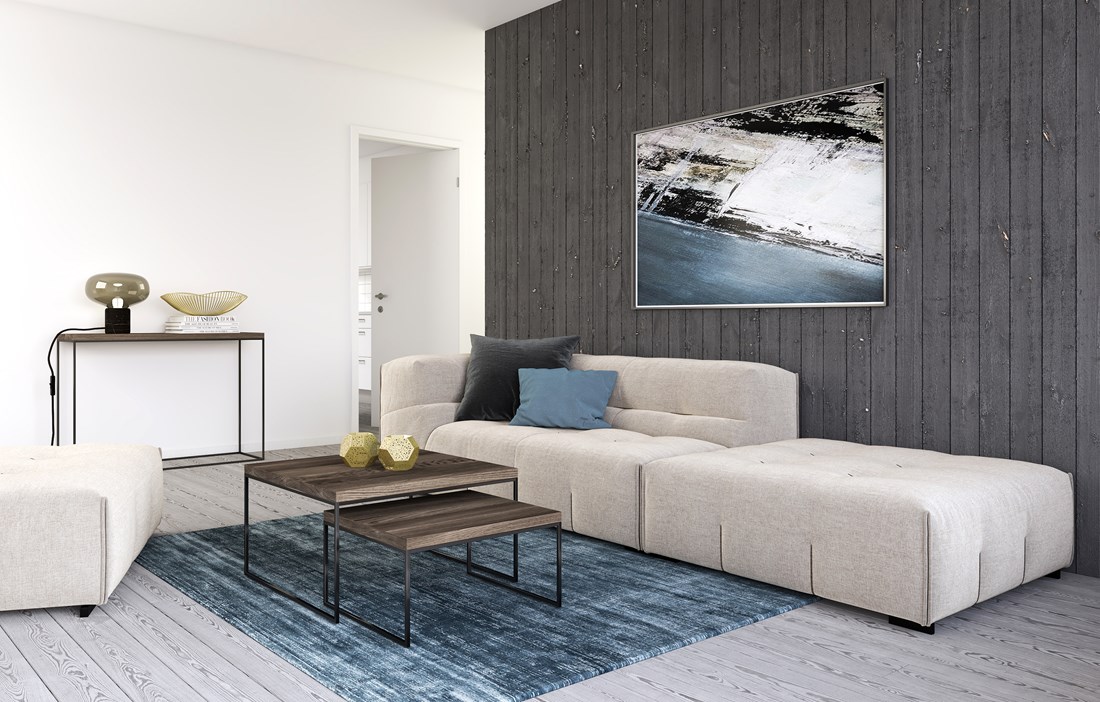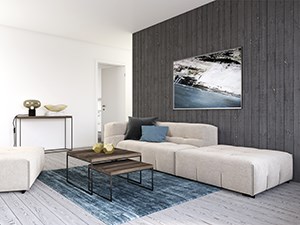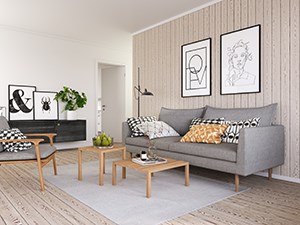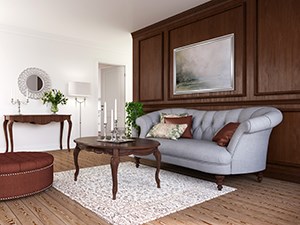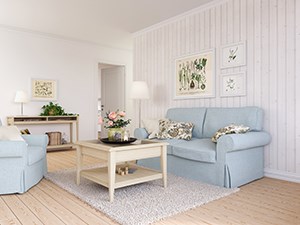The purpose of the study was to create a clear picture of market requirements and expectations when it comes to interior wood products. The results are drawn from a questionnaire in seven European countries: Sweden, Norway, the UK, Poland, Germany, France and Spain, and are based on over 7000 responses.
The results clearly show a positive view of wood in the home in all countries, irrespective of the interior style (Modern, Scandinavian, Classic and Country). Wood also reinforces a positive attitude towards each interior design style, so people become more positive towards a style if it has exposed wood than if there is no wood. The respondents prefer wood for flooring, wall cladding and furniture, once again irrespective of the style. A large group particularly prefers pine wood flooring, and light colours are more popular for both wood flooring and wall cladding. More want visible knots in wood flooring and cladding than knot-free alternatives. For consumers, ease of cleaning, help with installation and the option of home delivery are all key factors for their purchases. Broadly speaking, price, quality and look/design are of equal importance when purchasing home furnishing products.
According to Olof Broman, lecturer at Luleå University of Technology, the main takeout from the study is that wood is very much ‘on trend’.
- The study shows that with the right style, colour, finish, function and design, there is enormous potential for pine in both furniture and interior design, says Olof.
For wood flooring, around 70% of the respondents prefer a light colour palette, in this case pale brown and grey. The same also applies to wall cladding, with white wood another popular choice.
- Wooden floors and walls bring a warm feeling to an interior. With new technologies and finishes, it’s also possible to create many different looks and styles. We saw this at the London Design Fair, for example, where the Swedish Design Pavilion attracted considerable attention with its innovative, pink stained wood,” comments Björn Nordin, Director of Interior & Design at Swedish Wood.
The respondents in the study were also asked their view of statements regarding the environmental impact of products, with the majority saying that they value a product having a low environmental impact, and over half also stating that, from an environmental point of view, wood is a better material than the alternatives.
- We are seeing an increasing trend for interior architects and designers to choose pine because of its environmental credentials and because pine can be used to create so many different looks, concludes Björn Nordin.
The organisers of the study are industry organisation Swedish Wood, Linköping University and Luleå University of Technology. The study was conducted as part of the research and innovation programme, BioInnovation.
There are in-depth reports for each country. For access to the country reports, please email info@swedishwood.com.
BioInnovation
BioInnovation is a strategic innovation program founded by the Swedish Forest Industries Federation, IKEM (Innovation and Chemical Industries in Sweden) and TEKO (the Swedish trade and employers’ association for companies working in the textile and fashion industry). The program is funded by Vinnova, the Swedish Energy Agency and Formas as well as by the participating stakeholders from business, academia, institutes and public sector. The mission is to increase the added value and competitiveness in the Swedish biobased sector by creating the best possible conditions for developing new biobased materials, products and services. http://www.bioinnovation.se/
The study is conducted as part of the research and development programme BioInnovation – Biobased Construction and Housing of the Future as part of the sub-project Market Conditions and Business Models.

